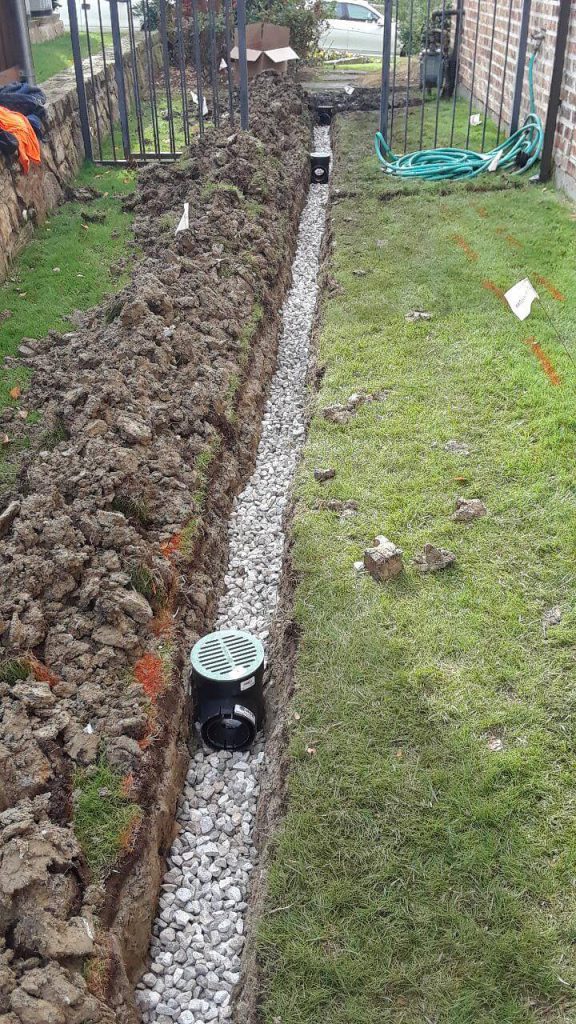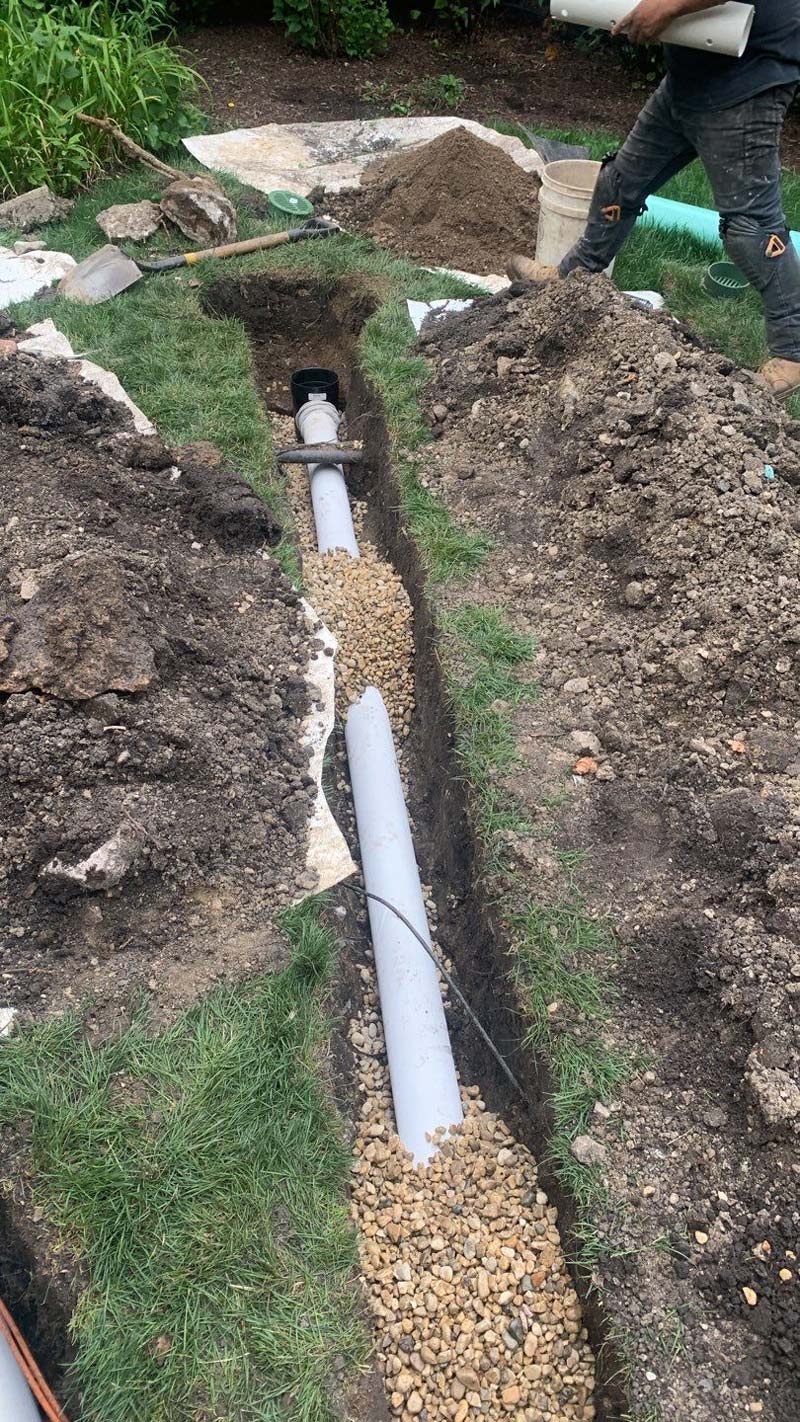Explore Economical and Durable Alternatives for Your French Drain System Requirements
Recognizing the Importance of a Sewage-disposal Tank French Drainpipe for Effective Wastewater Monitoring
The assimilation of a septic tank French drain system plays a pivotal function in reliable wastewater management, yet its relevance is frequently forgotten. Understanding the auto mechanics and advantages of such a system can brighten its important function in preventing dirt saturation and improving groundwater high quality.
What Is a Septic System French Drain?
A septic tank French drain is a specific drainage system created to take care of wastewater and protect against flooding in locations where standard water drainage approaches may be insufficient. This system integrates the performances of a standard sewage-disposal tank with a French drainpipe, permitting reliable wastewater therapy and efficient water diversion.

Built utilizing perforated pipes stocked crushed rock trenches, a French drainpipe promotes the movement of water away from important areas. It permits the infiltration of excess water into the surrounding soil, promoting effective drainage while protecting the septic tank's honesty. The mix of these 2 systems is especially helpful in areas with heavy rainfall or poor drainage, making certain the longevity and functionality of wastewater monitoring systems while safeguarding public health and the setting.

How It Works in Wastewater Administration
In wastewater management, the integration of a septic tank and French drainpipe plays an essential duty in ensuring effective therapy and disposal of sewage. The septic tank serves as the first line of protection, where wastewater goes through preliminary treatment via sedimentation and anaerobic digestion.
Once the wastewater is clarified, it flows right into the French drainpipe system, which is developed to facilitate more treatment and secure dispersal. The French drainpipe contains perforated pipelines buried in crushed rock or rock, permitting cured effluent to percolate right into the bordering dirt. This natural filtration process help in the removal of virus and nutrients, promoting groundwater recharge and reducing the threat of surface area contamination.
Together, the sewage-disposal tank and French drain produce a lasting strategy to wastewater monitoring, lessening ecological impact while guaranteeing conformity with health and wellness policies. This integrated system not only shields public wellness yet additionally maintains the integrity of local environments.
Advantages of a French Drain System

The French drain system offers countless benefits that enhance both wastewater administration and environmental management. Mainly, it efficiently reroutes water away from vital locations, minimizing the risk of flooding and dirt saturation that can endanger septic systems. This proactive drain solution helps preserve the integrity of the septic storage tank by protecting against excess dampness, which can cause system failing.
In addition, an appropriately mounted French drainpipe minimizes the potential for groundwater contamination. By channeling wastewater away from the property, it decreases the possibility of toxins getting in local water sources, thus securing public wellness and maintaining environmental equilibrium. The system additionally boosts the looks and capability of outdoor rooms by protecting against water buildup, which can develop unattractive pools or muddy locations.
Additionally, French drains pipes require reasonably low maintenance compared to various other water drainage remedies, making them an affordable long-lasting investment. Their flexibility permits them to be made use of in various landscapes, accommodating both commercial and household buildings. Inevitably, the advantages of a French drain system extend past prompt drain needs, contributing to go to this website sustainable wastewater management methods and see page advertising environmental stewardship.
Common Concerns Without a French Drain
Neglecting the installation of a French drainpipe can result in substantial obstacles in taking care of water flow and maintaining soil stability. One of the main concerns is the build-up of excess surface area water, which can develop pooling or swamping in lawns, particularly after heavy rains. This stagnancy can fill the soil, causing disintegration and compromising the structure of close-by structures.
Moreover, without a French drain, groundwater can improperly infiltrate septic systems, increasing the risk of system failing. The resulting back-up can result in undesirable smells, health dangers, and costly fixings. Poor drainage can likewise advertise the growth of mold and mildew, which can negatively influence interior air high quality and pose health and wellness dangers to residents.
Inevitably, the lack of a French drainpipe can result in a variety of architectural and ecological issues that require considerable treatment and expense to correct. Executing a French drainpipe system is vital for reliable wastewater monitoring and building defense.
Upkeep Tips for Homeowners
Normal upkeep of a French drainpipe is vital to guarantee its optimum performance and longevity. House owners must routinely inspect the drainpipe for any indicators of obstruction or damages. This consists of monitoring for debris buildup, which can restrain water circulation. Consider using a high-pressure water jet to remove the drainpipe. if debris is present.
Additionally, it is vital to maintain the area around the French drainpipe complimentary of particles, such as fallen leaves, dirt, and various other raw material. This will certainly stop clogging and permit reliable water drain. Regularly cutting plants and planting far from the drainpipe can also reduce root breach.
Moreover, property owners should keep an eye on the performance of their French drain after hefty rainfall. Observing just how web link well water is directed far from the septic tank can offer insights into its capability. If pooling water is kept in mind, it might suggest a demand for professional evaluation.
Lastly, take into consideration scheduling regular specialist evaluations to review the overall condition of the drainpipe. Such aggressive steps will certainly aid maintain the effectiveness of your French drainpipe and make certain effective wastewater administration for several years ahead.
Conclusion
In verdict, the septic storage tank French drain system plays an important role in effective wastewater management by making certain correct therapy of sewage and efficient water diversion. Overall, the septic container French drainpipe represents a sustainable remedy that profits both domestic and commercial homes across numerous landscapes.
The assimilation of a septic storage tank French drain system plays a pivotal duty in efficient wastewater management, yet its value is commonly ignored. Ultimately, the advantages of a French drain system extend past immediate water drainage requirements, contributing to lasting wastewater management techniques and advertising ecological stewardship.
In addition, without a French drainpipe, groundwater can incorrectly penetrate septic systems, enhancing the threat of system failing - French Drain System. Implementing a French drainpipe system is important for effective wastewater administration and home protection
In final thought, the septic tank French drain system plays an essential function in reliable wastewater monitoring by ensuring appropriate therapy of sewer and efficient water diversion.